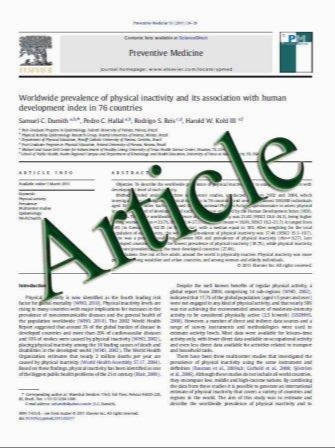A Bayesian hierarchical model for DCE-MRI to evaluate treatment response in a phase II study in advanced squamous cell carcinoma of the head and neck
- نوع فایل : کتاب
- زبان : انگلیسی
- مؤلف : Brandon Whitcher · Volker J. Schmid · David J. Collins · Matthew R. Orton · Dow-Mu Koh · Isabela Diaz de Corcuera · Marta Parera · Josep M. del Campo
- چاپ و سال / کشور: 2011
Description
Object Pharmacokinetic parameters from dynamic contrastenhanced MRI (DCE-MRI) were used to assess the perfusion effects due to treatment response using a tyrosine kinase inhibitor. A Bayesian hierarchical model (BHM) is proposed, as an alternative to voxel-wise estimation procedures, to test for a treatment effect while explicitly modeling known sources of variability. Materials and methods Nine subjects from a randomized, blinded, placebo-controlled, multicenter, phase II study of lapatinib were examined before and after treatment. Kinetic parameters were estimated, with an extended compartmental model and subject-specific arterial input function, on a voxel-by-voxel basis. Results The group treated with lapatinib had a decrease in median Ktrans of 0.17 min-1, when averaged across all voxels in the tumor ROIs, compared with no change in the placebo group based on nonlinear regression. A hypothesis test of equality between pre- and posttreatment Ktrans could not be rejected against a one-sided alternative (P =0.09). Equality between median Ktrans in placebo and lapatinib groups posttreatment could also not be rejected using the BHM (P =0.32). Across all scans acquired in the study, estimates of Ktrans at one site were greater on average than those at the other site by including a site effect in the BHM. The inter-voxel variability is of similar order (within 15%) when compared to the inter-patient variability. Conclusion Though the study contained a small number of subjects and no significant difference was found, the Bayesian hierarchical model provided estimates of variability from known sources in the study and confidence intervals for all estimated parameters. We believe the BHM provides a straightforward and thorough interrogation of the imaging data at the level of voxels, patients or sites in this multicenter clinical study.
Magn Reson Mater Phy (2011) 24:85–96 DOI 10.1007/s10334-010-0238-3 Received: 20 September 2010 / Revised: 19 November 2010 / Accepted: 2 December 2010 / Published online: 4 January 2011


